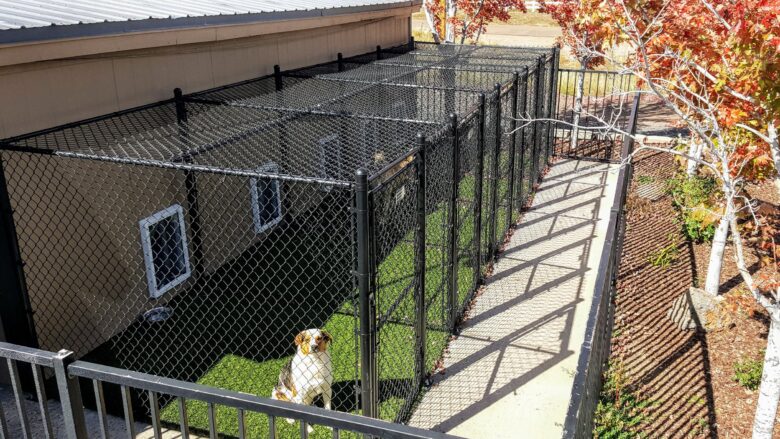If you’re a dog owner considering the services of boarding kennels, it’s essential to understand the daily occurrences and the routines followed within these facilities. The quality of a dog’s experience in a boarding kennel plays a significant role in their overall emotional and physical well-being. This article gives an intricate insight into the ins and outs of dog boarding kennels, the activities, potential emotional impacts, criteria for choosing the right kennel, and measures to ensure your best friend has the best time even in your absence.
The Rising Popularity of Dog Boarding Kennels in Australia
Dog boarding kennels have become increasingly popular within Australia. More pet owners are turning to these services, with recent statistics indicating a 21% increase in kennel usage over the last five years. There are several reasons behind this trend. Busy work schedules, frequent travel, and increased awareness about the emotional needs of pets are propelling more pet parents to seek professional care for their furry friends. The growing popularity of dog boarding kennels suggests a shift in pet care models, from reliance on neighbours or relatives to professional pet care services.
Understanding Dog Boarding Kennels
Dog boarding kennels are professional care facilities that offer temporary accommodation for dogs when their owners are unable to care for them. They come in different designs and models and with varying service offerings. Some kennels function as pet hotels with luxurious amenities like private suites, play areas, and even pet spas. Others are relatively basic, offering clean spaces, regular meals, and exercise for the dogs.
Regardless of the type or level of luxury, a typical setup within dog boarding kennels comprises individual kennels or suites, a common play or exercise area, and separate spaces for meals and medical care. The environment within these kennels is safe, controlled, and designed to keep dogs healthy, entertained and comfortable.
A Usual Day at Dog Boarding Kennels
A day in a dog boarding kennel begins with cleaning, followed by breakfast. Many facilities schedule play or exercise sessions after feeding, taking advantage of a dog’s natural energy peaks to engage them physically and mentally. Activity sessions can involve games, agility runs, or interaction with other dogs under careful supervision.
Post lunch, most facilities provide a quiet time, offering dogs the chance to rest and digest their meals. The afternoon usually marks another round of stimulated activity or exercise. Dinner is typically served later in the day – followed by a final bathroom break before lights out.
Emotional Implications for Dogs in Boarding Kennels
The emotional impact of staying in a boarding kennel can vary widely among different dogs. For some, it’s filled with fun and excitement, while for others, it may involve a fair amount of stress, at least initially. Research suggests that dogs tend to adapt to the kennel environment over time, with anxiety levels tapering off after a few days. However, several factors, like the dog’s temperament, the quality of the kennel, and the level of care provided, can affect this adjustment process.
Factors Affecting Quality of Life in Dog Boarding Kennels
Several key factors can influence a dog’s experience in a boarding kennel. Staff capacity has a direct implication on the level of care offered. Cleanliness, regular medical care, balanced meals, scheduled exercise, human contact, and socialisation opportunities also significantly contribute to the dog’s stay.
Choosing the Right Dog Boarding Kennel
To find the right kennel for your dog, consider criteria such as the facility’s certification, policies, staff expertise, and reviews from other customers. Make sure the kennel offers adequate medical care, exercise, and human interaction. Visit the kennel beforehand to look at the cleanliness, and don’t forget to study the kennel’s daily schedule to ensure it’s suitable for your dog.
Kennel Visit from a Dog Owner Perspective
Visiting a dog boarding kennel as a dog owner allows you to evaluate the facility from your pet’s lens. A kennel visit will include a walkthrough of the premises, observing the behaviour of the staff with the dogs, checking the cleanliness, safety measures, and so on. It’s essential to note how the dogs are being treated and if they appear happy and relaxed.
Preparing Your Dog for Boarding Kennels
Before boarding, ensure your dog is familiar with the facility and the staff. It’s also recommended to gradually accustom your dog to extended periods of separation. Keep their favourite toys or blanket in their bag to provide comforting smells. Ensure they are up to date with their vaccines and flea treatments.
Conclusion
Dog boarding kennels play a crucial role in laying the groundwork for our pets’ well-being while we’re away. Understanding the daily routines, the emotional implications, and how to prepare your dog for this experience are critical steps to ensuring a pleasant stay for your canine companion. With this extensive insight into what a typical day looks like in a kennel, you have a better hand deck to make an informed decision about boarding your dog.

Leave a Reply